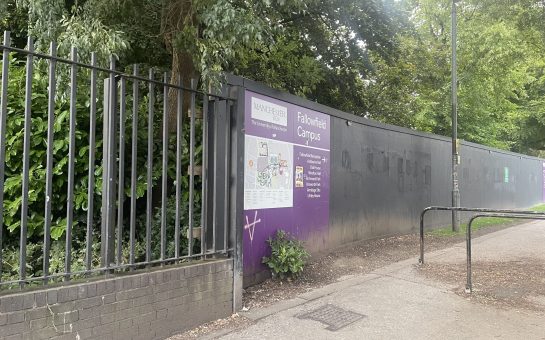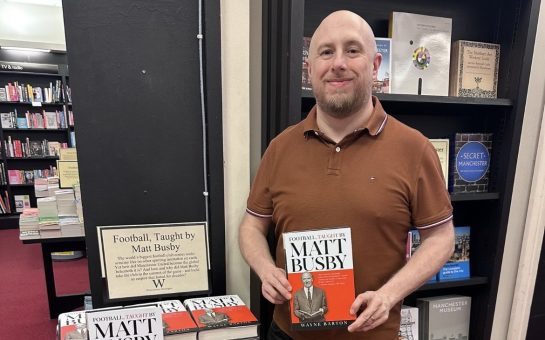Whether you are in camp Kirk or Picard, or if like most TV viewers you prefer the rollercoaster that is Corrie or Waterloo Road, there is something to be said for Captain Kirk’s pledge to ‘boldly go where no man has gone before’.
Kirk’s infamous words resonate when you look toward the journey of discovery that Manchester has embarked on over the last century.
Academics residing, studying and visiting Manchester and its hallowed halls of academia have made some of the most world-changing discoveries.
5) Graphene
What’s that? For any humanities students who daily feel the shame of an absence of scientific knowledge, graphene is a two-dimensional material consisting of a single layer of carbon atoms arranged in a honeycomb structure.
It is the child prodigy of material science, the superman of materials.
Andre Geim and Kostya Novoselov won the Nobel Prize in physics for their research and discovery of graphene at The University of Manchester between 2003 and 2004.
Coincidentally, they are to be awarded the honorary Freedom of the city of Manchester award on Wednesday October 9, the highest honour Manchester can bestow.
A number of properties place graphene in the material science hall of fame. It is the thinnest material known and yet is also one of the strongest.
It conducts electricity as efficiently as copper and outperforms all other materials as a conductor of heat. Some scientists claim that graphene is 200 times stronger than its rival steel.
Did I also mention that graphene is almost completely transparent? Yet so dense that even the smallest atom helium cannot pass through it. Its transparency makes it ideal for use in the touchscreens of our beloved iPhones and tablets.
Currently most screens are made from Indium Tin Oxide (ITO), which absorbs 10 percent of incident light. But ITO is quite brittle, whereas graphene is extremely flexible and can stretch up to 20% of its length.
It is also the stiffest known material, more so than a diamond. It’s the Miley Cyrus of the material world – one big juxtaposition.
4) Splitting atoms
Undoubtedly one the most profound discoveries in science was Ernest Rutherford’s splitting of the atom in Manchester in 1917.
Rutherford was a New Zealander, who came to Manchester in 1907 to take up the position of Chair of Physics at the University.
Already a Nobel scientist, winning the Nobel Prize for Chemistry in Canada, the city of Manchester became a global centre for scientific research when the ‘second Newton’ arrived.
This pantheon of science set out to discover what lay within a single atom and At his laboratory just off Oxford Road, he determined that the mass of an atom was concentrated in its nucleus- a particle 1,000 times smaller than the atom itself.
This discovery changed the face of science. Scientists had previously presumed the atom was the smallest particle in the universe. How little did they know?
Like a Matryoshka doll he planned to prove that just like the atom, the nucleus itself had smaller components.
To cut a long story beyond my comprehension short, Rutherford’s experiments on atoms lead to the first ever artificially-induced nuclear reaction, a breakthrough that would lead ultimately to nuclear power and the atomic bombs that devastated Hiroshima and Nagasaki in World War II.
3) The first modern computer
One of the earliest modern computers was developed at Victoria University of Manchester (now the University of Manchester) in 1948 by Tom Kilburn and Freddie Williams.
The Manchester Mark 1, affectionately known as ‘Baby’, is essentially the iPod, laptop and mobile phone in its embryonic stages.
A ‘subtle’ contraption, the gargantuan size of the ‘Baby’ proclaims to descendants, iPod and the mobile phone, ‘go big or go home!’
It took up a whole room with its post office racks and jumble wiring and the keyboard was a series of push buttons and switches, mounted vertically.
In modern terms the prototype ‘Baby’ had a RAM (random access memory) of just 32 locations or ‘words’. Each word in the RAM consisted of 32 bits (binary digits) and so Baby had a grand total of 1024 bits of memory – and a computing speed of 1.2 milliseconds per instruction.
Today a pocket-sized 80 GB Apple iPod is capable of storing 640 MILLION times more information than the original room-sized Baby.
2) Contraceptive pill
In 1961, whilst at the University of Manchester, researcher Herchel Smith worked on an inexpensive way of producing chemicals that can stop women ovulating during their monthly menstrual cycle.
The contraceptive pill was born, and continues to be an effective form of contraception used all over the world today, doing a great deal for women’s rights along the way.
1) First in vitro baby
Manchester is responsible for giving those who struggle to conceive on their own the opportunity to have a child.
In 1978, after a decade of research by Manchester-born Robert G. Edwards and colleague Patrick Steptoe, the world’s first baby Louise Brown was conceived by in vitro fertilization.
Louise was born at the Oldham General Hospital where medical history was made and Robert G. Edwards was awarded the Nobel Prize in Physiology or Medicine for the development of in vitro fertilization.
Image courtesy of Horia Varlan via Flickr, with thanks.
For more on this story and many others, follow Mancunian Matters on Twitter and Facebook.



